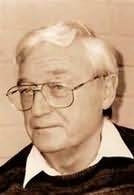Tom Bombadil is one of the most curious of characters in The Lord of the Rings by J.R.R. Tolkien. His scene with the four hobbits, early in the trilogy when they are first leaving the shire, almost seems displaced. In the movie version, director Peter Jackson eliminated it altogether. And the singing Tom, along with his wife Goldenberry, have prompted debate among critics and fans alike, many believing that Tolkien should have cut him from The Fellowship of the Ring.
Not so fast, says C.R. Wiley. In what is perhaps the most insightful (and relatively short at 112 pages), Wiley argues that Tom Bombadil has a purpose and a meaning, but like all good mysteries, “the truth” the Tolkien’s character will always remain a mystery. Wiley’s In the House of Tom Bombadil is an absolute gem of a discussion.
Frodo, Sam, Merry, and Pippin meet Tom Bombadil in a scene fraught with danger. They have just left the shire and entered the Old Forest. They discover that the trees, and one in particular, aren’t taking kindly to the intrusion, swallowing one hobbit, and almost swallowing a second, when the larger-than-life Tom Bombadil arrives on the scene. The tree is rebuked and promptly coughs up the two hobbits it was capturing. Tom is a master of the Old Forest, and he clearly exercises dominion. But what is he about?
 |
| C.R. Wiley |
Wiley suggests that, to understand Tom, you need to understand the idea expressed in the biblical Book of Genesis about man being given dominion over nature. And you need to understand it in the way it was intended, essentially the idea of stewardship, and not as it’s often misinterpreted (domination, pillage, and destruction). To explain Tom’s wife Goldenberry, Wiley turns to fairy stories about the spirits of water. Using Tolkien’s other writings about both Tom and fairies, Wiley makes a solid and compelling case in a highly readable style.
A pastor and former college professor, Wiley has also published The Household and the War for the Cosmos (Canon Press), and the first book in his young adult fantasy series, The Purloined Boy (2017). His short fiction has been published in The Mythic Circle and elsewhere. His articles have been published by Touchstone Magazine, Modern Reformation, Sacred Architecture, The Imaginative Conservative, Front Porch Republic, National Review Online, and First Things, among others. Wiley is a board member of the Academy of Philosophy and Letters, as well as New Saint Andrews College. He lives with his family in the state of Washington.
In the House of Tom Bombadil is an excellent addition to the canon of literary criticism about Tolkien and his works, and it gives the often overlooked character his due. And who knew literary criticism could also be fun?
















